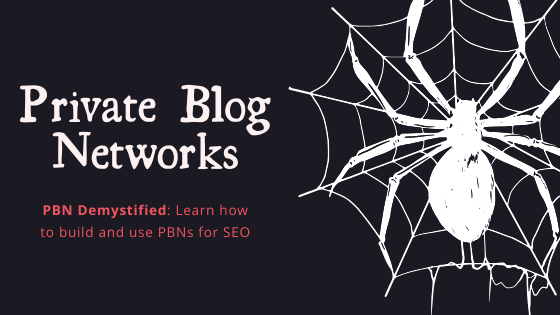All Categories
Featured
Table of Contents
- – Top What Is Semantic Seo Prices Near Me
- – Where To Buy The Top Semantic Search Algorithms
- – Top Semantic Seo You Can Buy
- – What Is The Top Semantic Seo Insights Program?
- – What Is The Top Semantic Seo Tools
- – Which Is The Leading Semantic Seo Platform C...
- – Who Offers The Most Reliable Semantic Search...
The internet is changing, becoming an increasing number of semantic. Search engine optimization is additionally altering and ending up being more semantic. This is since online search engine have progressed and are moving an increasing number of towards reading content on the web. Naturally, that has actually also transformed the means we develop material, particularly if we wish to place much better in the online search engine.
, the pioneer of the Internet, spoke of to represent the concept that all things in the universe are deeply interconnected. Intertwingularity is not typically acknowledged, people keep acting they can make things deeply ordered, categorizable and consecutive when they can not. Whatever is deeply intertwingled. Based upon the relationships between search objectives, the internet search engine likes a material ready by computing the range between the vectors of definition.
It enables you to see, starting from a topic, all the entities that relate to that subject. By doing this you can plainly see which entities/concepts/ideas have actually already been covered on your web site, and you can uncover new possibilities by understanding what material you can include and how to create it.
Top What Is Semantic Seo Prices Near Me
It has the ability to make your content understandable for online search engine on the one hand and for your audience on the various other. Structuring your material version highlights your content and its underlying relationships to make sure that online search engine can acknowledge you among hundreds of items of details, making you a lot more visible to users that satisfy the search intent pertaining to your service.
In semantic SEO copywriting, an editor begins with a broader array of topics and tailors the content to consist of semantically pertinent terms and phrases that assist readers recognize a topic, similar to checking out web content in a wiki. From a content writing viewpoint, one practical way to do this is to produce a vocabulary of terms and concerns bordering your target subject.
Where To Buy The Top Semantic Search Algorithms
Find out more regarding by viewing the by!.

Semantic search describes the process of exactly how search engines comprehend and match key phrases to a searcher's intent in organic search engine result. Before semantic search, internet search engine like Google ran like matchmakersaligning details words in your query with those exact words on pages. The outcomes were uncomplicated however usually did not have depth.
Top Semantic Seo You Can Buy
It allows Google to supply quick, precise answers to search queries concerning real-world subjects. When you type a question word into Google, you're not just going into a series of words. You use a complicated internet of significances and connections. Google's Knowledge Graph sees these words as entities with context and relationships.
When you browse for "Apple," Google doesn't simply see a word that describes a fruit. It recognizes Apple as a business and can supply related information. Like the name of its chief executive officer, Tim Chef, or its latest stock costs. Google introduced the Hummingbird update in 2013. It was Google's response to the rise of voice searches, where inquiries became more conversational and nuanced.
What Is The Top Semantic Seo Insights Program?
By incorporating NLP, Hummingbird permitted Google to relocate beyond plain keyword matching. It assisted the search engine comprehend search intent, boosting the odds that results would precisely match the reason behind an individual's search.
RankBrain is an artificial intelligence system that assists Google interpret queries it hasn't seen before. It can make hunches about words and phrases it doesn't recognize and filter results accordingly. Making it much more reliable at managing never-before-seen search queries. RankBrain takes into consideration even more than just key phrases when examining a search query.
It brings outcomes that match the key phrases and straighten with the total intent of giving puppy training advice. And if the user often looks for dog-related content, Google could prioritize a lot more thorough training guidesrecognizing the individual's continuous rate of interest in the subject. Incorporating innovations like the Understanding Chart, Hummingbird, and RankBrain, semantic search helps the Google formula interpret and connect information throughout a substantial web of information.
What Is The Top Semantic Seo Tools
The emphasis changes from keyword choice to an alternative method incorporating individual intent, topical relevance, and total user experience. Producing web content that deals with the searcher's demands with detailed information can boost your SERP rankings.
A wider method to content aligns much better with semantic search's change away from specific keyword phrase matching and towards customer intent. Content that covers search questions much more thoroughly not just satisfies customers.
And 5 times higher than websites that take 10 seconds to load. While technological SEO ensures optimal internet site efficiency and access, concentrating on customer experience (UX) takes it a step further. UX intends to produce a visually attractive, user-friendly user interface with interesting, top quality material that encourages site visitors to remain. Semantic search innovation enables internet search engine to go for results that offer the best possible UX.
Which Is The Leading Semantic Seo Platform Company

All showcase Google's capacity to deal with a subject question comprehensively. By recognizing the context and intent behind customer inquiries, search engines can supply extra relevant info and possibly enhance customer engagement. Customization in search results page creates much better UX.Based on your previous search background and preferences as a user, semantic search assists look engines tailor the outcomes to fit your distinct needs and passions.
It fetches outcomes that match the keywords and align with the overall intent of offering puppy training suggestions. And if the customer often looks for dog-related material, Google may prioritize extra in-depth training guidesrecognizing the customer's continuous passion in the subject. Combining innovations like the Knowledge Chart, Hummingbird, and RankBrain, semantic search assists the Google algorithm translate and link information throughout a large web of info.
Who Offers The Most Reliable Semantic Search Strategies Services
The emphasis shifts from keyword option to an alternative strategy including individual intent, topical relevance, and overall customer experience. Creating content that resolves the searcher's demands with extensive information can enhance your SERP positions.

And sort of content can best satisfy their needs. A more comprehensive method to content aligns better with semantic search's change away from specific keyword matching and towards customer intent. Which discusses the increased focus on topic collections, as opposed to individual search phrases. Material that covers search inquiries more completely not just pleases individuals.
UX aims to create an aesthetically appealing, straightforward interface with appealing, quality material that urges site visitors to remain. Semantic search innovation makes it possible for search engines to aim for results that give the ideal feasible UX.
All display Google's capability to deal with a subject query adequately. By understanding the context and intent behind individual queries, search engines can supply much more appropriate info and potentially raise user involvement. Customization in search results page creates better UX.Based on your previous search history and choices as a user, semantic search assists search engines tailor the outcomes to match your unique demands and rate of interests.
Table of Contents
- – Top What Is Semantic Seo Prices Near Me
- – Where To Buy The Top Semantic Search Algorithms
- – Top Semantic Seo You Can Buy
- – What Is The Top Semantic Seo Insights Program?
- – What Is The Top Semantic Seo Tools
- – Which Is The Leading Semantic Seo Platform C...
- – Who Offers The Most Reliable Semantic Search...
Latest Posts
What Is The Most Affordable Schema Markup For Semantic Seo Deal
Which Is The Top Best Semantic Seo Tools Brand
What Is A Good Price For A Semantic Search Engine Results Pages (Serps)?
More
Latest Posts
What Is The Most Affordable Schema Markup For Semantic Seo Deal
Which Is The Top Best Semantic Seo Tools Brand
What Is A Good Price For A Semantic Search Engine Results Pages (Serps)?